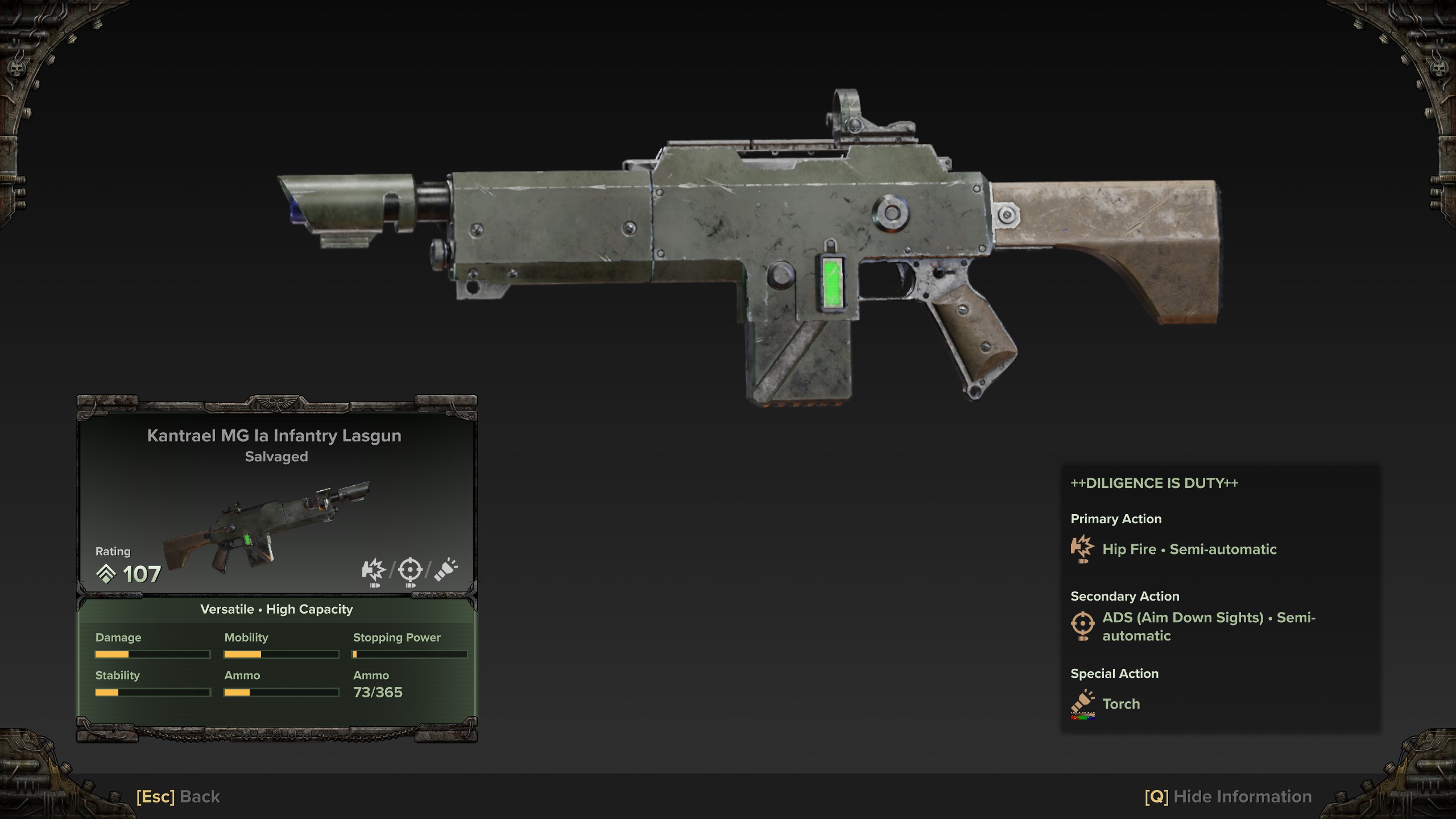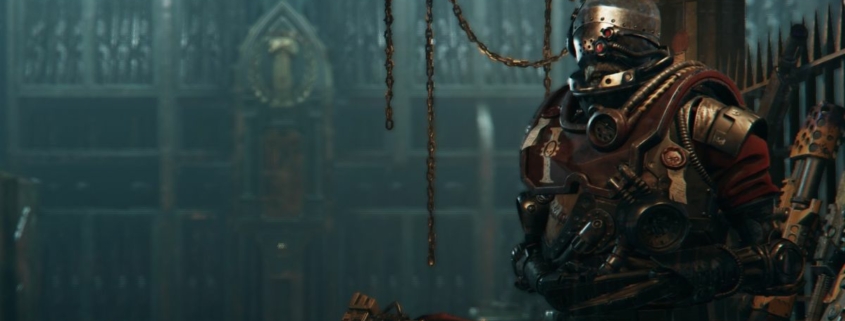What do Darktide’s weapon symbols mean?
Something that’s frustrated a lot of players in the Warhammer 40,000: Darktide beta is not knowing exactly what a weapon is like before it’s in our hands. When you see a new autogun or chainsword in the armory there will be a couple of words to sum up its strengths, like Mobile or High Capacity, some numberless bars for attributes like damage and reload speed, and then a trio of icons that are as inscrutable as any of the Chaos runes drawn on the walls of Tertium Hive. It’s hard to know what you’re buying.
Though there’s no mouseover text on these icons in the beta, press the V key while you’re in the menu to inspect a weapon and you’ll bring up an information screen that provides their names, if not descriptions. (The combo attacks of melee weapons are also shown here.) Some are plain enough, and a few will be familiar to those who played Fatshark’s previous Warhammer game, Vermintide 2. Others are still straight-up inscrutable. I’ve spent some time in the Meat Grinder testing room to figure out just what all of the weapon symbols and stats mean.
Ranged weapon symbols
The three symbols for each ranged weapon describe, from left to right, its primary attack, secondary attack, and special action. These are mapped to left-click, right-click, and mouse-five (likely a thumb button) by default. The bullets beneath a gun’s symbols tell you whether that firing mode is:
- Semi-automatic (one bullet)
- Fully automatic (two bullets)
- Burst-fire (two bullets with a circle between them)
A single bullet followed by an arcing trail means it’s a projectile weapon that will drop over distance and needs to be aimed high. The one that looks like a shotgun shell next to a stream of pellets? That’s a shotgun, yes. It’ll fire in a cone.
Here are the many other symbols you’ll see on ranged weapons.
Melee weapon symbols
The first symbol represents a weapon’s light attack, the second its heavy attack (triggered when you hold down the attack button), and the third is its special action, mapped to mouse-five. Make sure to bring up the full details by pressing V, because melee weapon combos often include different attacks that won’t match that symbol.
What do the item rating and stats mean?

Every weapon in Darktide has a rating number. The higher that number, the more points will be spread across its attribute bars. That doesn’t mean all its bars will be higher, however. Though a higher rating often means a better weapon, sometimes those extra points won’t have been spent wisely. Keep an eye out for high-rating weapons with low damage bars in particular.
As for what those attributes mean, some are self-explanatory, like reload speed, but others are a little more opaque. Here’s what the more confusing ones mean.
- Mobility: Bonus dodge distance. This is more complex than it sounds. Each weapon type has a different base dodge distance, and a different number of dodges you can perform in a row before that distance drops off until you reset the chain by performing a block or attack. A low mobility rating on a weapon type that begins with a high dodge distance, like a combat knife, might still be better than high mobility on a weapon like an axe that begins with a low dodge distance. In Vermintide 2, Mobility also made you better at sprinting and might do something similar in Darktide, but if so it’s a slight improvement I haven’t been able to detect.
- Cleave Targets: The number of enemies that will be damaged in a single swing. You can increase this by swinging the mouse horizontally as you attack.
- First Target: How much damage the first enemy hit by a cleave will take.
- Cleave Damage: How much damage will spread to subsequent enemies in a cleave.
- Finesse: Bonus weak point damage.
- Defences: Reduces the stamina costs of blocking.
- Penetration: Reduces the amount of damage negated by carapace armor.
- Stopping Power: How likely it is to stagger enemies on hit.
- Crowd Control: How likely a shield is to stagger enemies on push.
- Collateral: How much suppression it causes, reducing enemies’ aim and sending them into cover.
- Stability: Reduces the amount of recoil when firing and the amount of sway in ADS.
- Ammo: Can influence the total amount of ammo carried as well as the amount of ammo in each clip. This is the one bar with actual numbers next to it, so make sure to check them.
- Charge Speed: How fast it powers up charged attacks.
- Warp Resistance: Reduces the amount of peril generated, peril being the stuff psykers build up as they use their abilities and which needs to be managed carefully to prevent their brains blowing up.
- Quell Speed: Increases the speed peril drops off.
Source link




